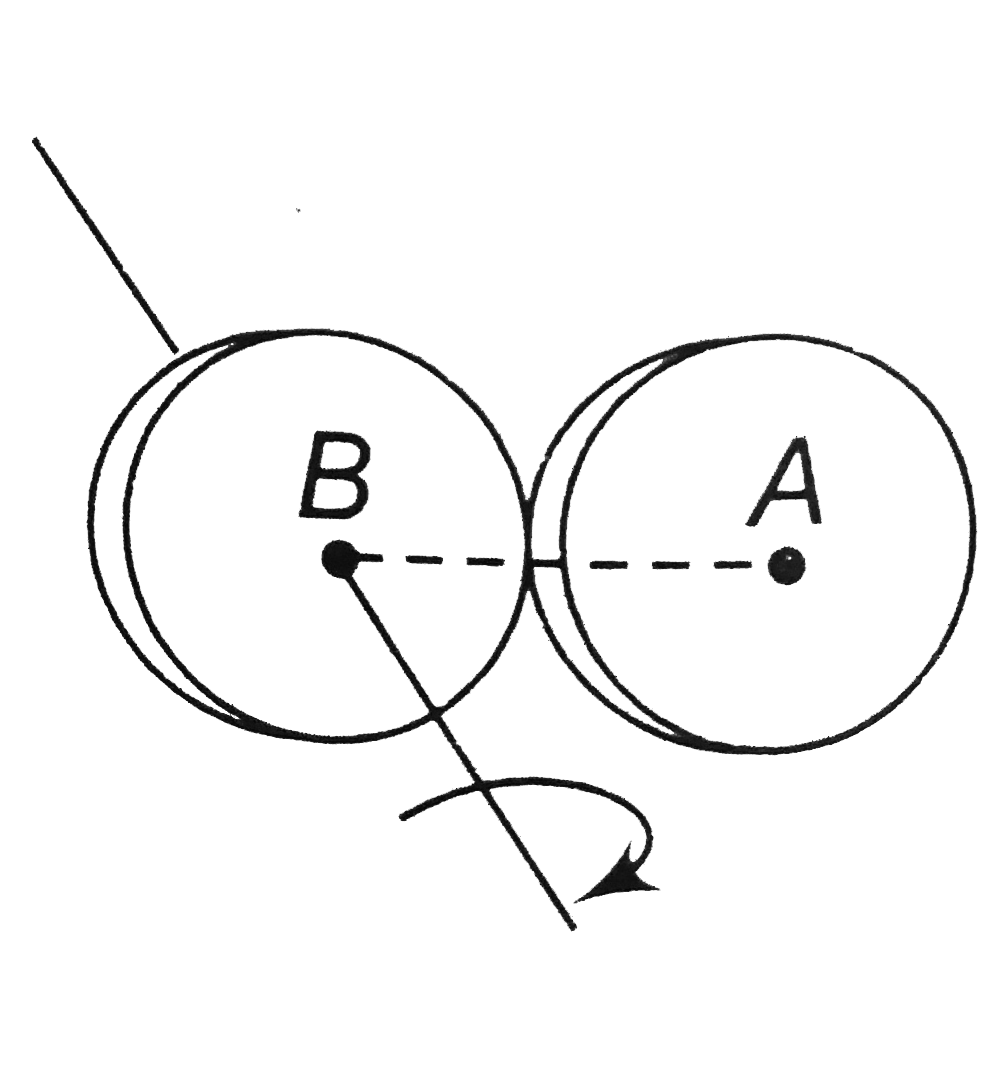A rigid body not fixed in some way can have either pure translation or a combination of translation and rotation.
In rotation about a fixed axis, every particle of the rigid body moves in a circle which lies in a plane perpendicular to the axis and has its centre on the axis.
If both assertion and reason are true and reason is the correct explanation of assertion.
If both assertion and reason are true but reason is not the correct explanation of assertion
If assertion is true but reason is false.
If both assertion and reason are false.
The correct Answer is:b
A rigid body fixed at one point or along a line can have only rotational motion. A rigid body not fixed in some way can have either pure translator or a combination of translation and rotation.
Related Playlists
- BOOK - NCERT FINGERTIPSCHAPTER - SYSTEM OF PARTICLES AND ROTATIONAL MOTIONSEXERCISE - NCERT Exemplar8videos
SYSTEM OF PARTICLES AND ROTATIONAL MOTIONS
- BOOK - NCERT FINGERTIPSCHAPTER - PRACTICE PAPERSEXERCISE - Practice Paper 350videos
PRACTICE PAPERS
- BOOK - NCERT FINGERTIPSCHAPTER - THERMAL PROPERTIES OF MATTEREXERCISE - Assertion And Reason10videos
THERMAL PROPERTIES OF MATTER
Knowledge Check
- Question 1 - Select One
For a rotating body about fixed axis ,
Aevery particle moves in a circleBthe linearvelocity is related to angular velocityCBoth (1) and (2) are correctDBoth (1) and (2) are incorrect - Question 1 - Select One
All the particles of a rigid rotating body move in a circular path when the axis of rotation:-
Apasses through any point in the bodyBis situated outside the bodyCsituated any whereDpasses through the centre of mass - Question 1 - Select One
Two thin discs each of mass M and radius r are attached as shown in figure, to from a rigid body. The rotational inertia of this body about an axis perpendicular to the plane of disc B and passing through its centre is :
 .A2Mr2B3Mr2C4Mr2D5Mr2
.A2Mr2B3Mr2C4Mr2D5Mr2 - Question 1 - Select One
Two thin discs each of mass M and radius r metre are attached to form a rigid body as shown in figure. The rotational inertia of this body about an axis perpendicular to the plane of disc B and passing through its centre is
 A2Mr2B3Mr2C4Mr2D5Mr2
A2Mr2B3Mr2C4Mr2D5Mr2 - Question 1 - Select One
Motion of the rigid body is observed from an inertial frame of reference. Rigid body is rotating with nonuniform angular speed about a fixed vertical axis. If we consider a particle of the rigid body not lying on its axis of rotation then net force acting on this particle is
Aparallel to axis of rotationBperpendicular to the axis of rotation and intersecting with itCperpendicular to the axis of rotation and not intersecting with itDnone of these - Question 1 - Select One
Motion of the rigid body is observed from an inertial frame of reference. Rigid body is rotating with constant angular speed about a fixed vertical axis. If we consider a particle of the rigid body not lying on its axis of rotation then net force acting on this particle is.
Aparallel to axis of rotationBperpendicular to the axis of rotation and intersecting with itCperpendicular to the axis of rotation and not intersecting with itDnone of these
Similar Questions
Rotation OF Rigid Body -5 (Combined Translational and Rotational Motion)
View SolutionRotation OF Rigid Body -4 (Combined Translational and Rotational Motion)
View SolutionAngular momentum of a rigid body in pure translation | Pure rotation | Rotation plus translation
View SolutionDoes a body rotating about a fixed axis have to be perfectly rigid for all points on the body to have the same angular velocity and the same angular acceleration ?Explain.
View Solution

